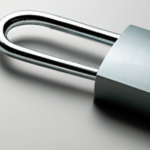In this article, we’ll delve into the controversial issue of Error 53, affecting users who had their iPhone’s home button replaced. This error resulted in the device turning entirely useless after a software update, presenting an Error 53 that rendered the phone inoperative and made recovering data impossible.
We’ll cover the history of Error 53, details on how phones were essentially bricked, the Apple Store experience on the matter and its impact on independent repair shops, plus the eventual response from Apple itself.
We’ll also discuss the lack of information and transparency regarding Error 53. The issue caused intense frustration for many iPhone users, leading to a nine million dollar fine levied against Apple in Australia. Let’s dive in…
Table of Contents
History of Error 53
The issue of Error 53 started with the iPhone 6, where if a user changed the home button, the fingerprint scanner would no longer work. However, when the user updated the phone to a new version of iOS, the phone would then brick itself with Error 53. The phone would no longer work, and the user couldn’t even revert to an old version or retrieve their data.
Apple’s solution was to offer a refurbished phone for $299.
Initially, Apple claimed that Error 53 was a security feature designed to prevent unauthorized access to a phone’s data. However, this claim was quickly debunked, as the error only appeared when a user updated their phone to a new version of iOS, typically well after changing the home button. The home button update by itself did not appear to cause the issue.
There was a nine month period between the phone’s launch and the iOS update that caused phones to brick. If a user updated their home button and there truly was a security issue with doing so, this essentially gave hackers up to nine months to access the phone’s data before the update ever took place. Apple never addressed this flaw in their own logic (or lack thereof).
Instead, when users went into Apple stores with Error 53 issues, Apple store clerks would blame third-party repair shops for causing the issue. Apple never looked into whether the error was a bug or a manufacturing defect, and this lack of investigation led to assumptions that Apple was intentionally messing with users’ devices.
This poor response led many people to assume that Error 53 was a deliberate attempt by Apple to discourage third-party repairs and force customers to pay for expensive repairs or buy new devices.
Independent repair shops were not aware that changing the home button would destroy the device, as previous iPhones allowed home button changes with no issues. In fact, Apple’s own service manual did not state that Error 53 would occur if a user changed the home button.
The EULA also did not mention the error, which led to confusion and frustration for users who lost their data and had to pay for a refurbished phone.

Understanding the Function of iPhone’s Home Button and Fingerprint Sensor
The home button on the iPhone has evolved over the years, with the iPhone 5s being the first device to incorporate a hardware-based security feature called Touch ID, a fingerprint sensor. The purpose of the fingerprint sensor was to allow users to login to their phone without typing a passcode and to access secure applications, like Chase Bank or Binance, without typing in a long passcode on a phone keyboard.
To ensure the security of the fingerprint sensor, Apple implemented the Secure Enclave. This security feature, introduced with the iPhone 5s, was designed to protect the user’s fingerprint data by storing it in a separate, encrypted area of the device’s processor. This ensures that data cannot be accessed by any other part of the device or any third-party apps.
Secure Enclave pairs the home button with the CPU and everything inside the phone. When a user changes the home button with the fingerprint sensor, Touch ID no longer works. However, the iPhone 6 introduced a flaw where the phone would brick itself with Error 53 if the user updated the phone to a new version of iOS after changing the home button.
While some argued that Error 53 was implemented for security reasons, it was most certainly not a well-programmed security feature. If it were truly done for security reasons, the feature would activate the moment a knockoff home button was detected, not nine months later during a software update.
Additionally, the home button is not hot-swappable, so even if someone were to hack a home button, they would need to reboot the phone, which would ask for a passcode.
The home button and fingerprint sensor were implemented to make it easier for users to access their phone and secure applications. However, the flaw with Error 53 was absolutely a huge mistake on Apple’s part, and with some far-reaching consequences. Let’s take a look at repercussions from the incident.
Error 53: The Apple Store Experience
In 2015, when news of Error 53 first broke, Apple’s initially responded that it was a security feature to protect users’ data. When users started encountering Error 53 on their iPhones, they often turned to Apple stores for help.
However, the experience at the Apple store was rarely positive. When users brought in their bricked iPhones, the Apple store clerks would often accuse them of going to third-party repair shops, which clerks claimed caused the issue. This accusation was not always true, and it left many customers frustrated and confused, leading many to believe that Apple was not taking responsibility for the problem, instead simply blaming third-party repair shops.
To make matters worse, when users brought in their affected iPhones to the Apple store, they were often told there was nothing that could be done to fix the device. Instead, they were offered a refurbished phone for a price of $299. This solution was not satisfactory for many users who lost all their data and, adding insult to injury, now had to pay for another phone – a used one no less.
The lack of transparency and accountability from Apple regarding Error 53 left many users feeling frustrated and disheartened, and the entire episode highlighted the importance of transparency and accountability in the tech industry.
It also raised questions about the balance between security and user control. While Apple has a responsibility to protect user data, they must also ensure users have the right to repair and modify their own devices without fear of bricking.

The Independent Repair Shop’s Perspective
From the perspective of an independent repair shop, the issue with Error 53 was not just a matter of inconvenience, but also a significant financial loss. The error caused many devices to become unusable, and the only fix was to replace the entire device, which was costly for both the customer and the repair shop.
Repair shops were really caught in the middle of this situation, as they weren’t informed by Apple that changing the home button would cause such an error. They also weren’t provided with any documentation or tools to fix the issue, and Apple refused to repair the affected devices, whether under warranty or out of warranty.
Many independent repair shops had to deal with angry customers who were left with bricked devices and lost data. Some repair shops had to bear the cost of replacing the devices, which was not only expensive but also time-consuming.
The issue with Error 53 also highlighted the need for greater access to repair information and tools for independent repair shops. Repair shops were unable to fix (or better yet, prevent) the issue due to the lack of documentation and tools provided by Apple, which made it difficult for them to compete with Apple’s own repair services.
Error 53: Apple’s Official Statement and Australia’s Hefty Fine
Eventually, Apple did release a statement acknowledging that Error 53 was a problem, promising to release a software update to fix the issue. Eventually, they did indeed release that update; however, it only helped users yet to experience the error. Anyone with a device already bricked was still out of luck.
In June of 2018, the Federal Court of Australia fined Apple a hefty AU$9 million for refusing to offer customers refunds on the bricked phones.
In one of the more remarkable aspects of the legal action, the ACCC executed an undercover operation, placing calls to several different Apple retailers. When the Apple representatives contacted said Apple had zero responsibility to remedy bricked iPhones repaired by an unauthorized third party, the writing was on the wall for an incoming fine.
Apple did finally admit that, during the 12 months in which Error 53 ran amuck with no fix, the company misdirected 275 Australian customers looking for compensation for devices bricked by Error 53, via its website, Apple Store personnel, and customer service calls as well.
Overall, it’s fair to say that Apple’s reaction to Error 53 was slow and inadequate. Many users felt Apple refused to take responsibility for a problem that was clearly the company’s own fault. While Apple eventually did release a fix for the issue, it was too little, too late for many customers, especially ones who already lost access to their devices and their data.
At this point, it’s one for the history books, and we can all hope that lessons were learned moving forward.
- Amazon Email Phishing: How to Identify and Avoid Scams - May 11, 2025
- Malwarebytes vs McAfee: Decoding the Ultimate Antivirus Battle - May 11, 2025
- Best Antivirus for Windows 10: Expert Recommendations for 2023 - May 11, 2025










1 thought on “Error 53 Backlash: Apple FINED MILLIONS in Australia”